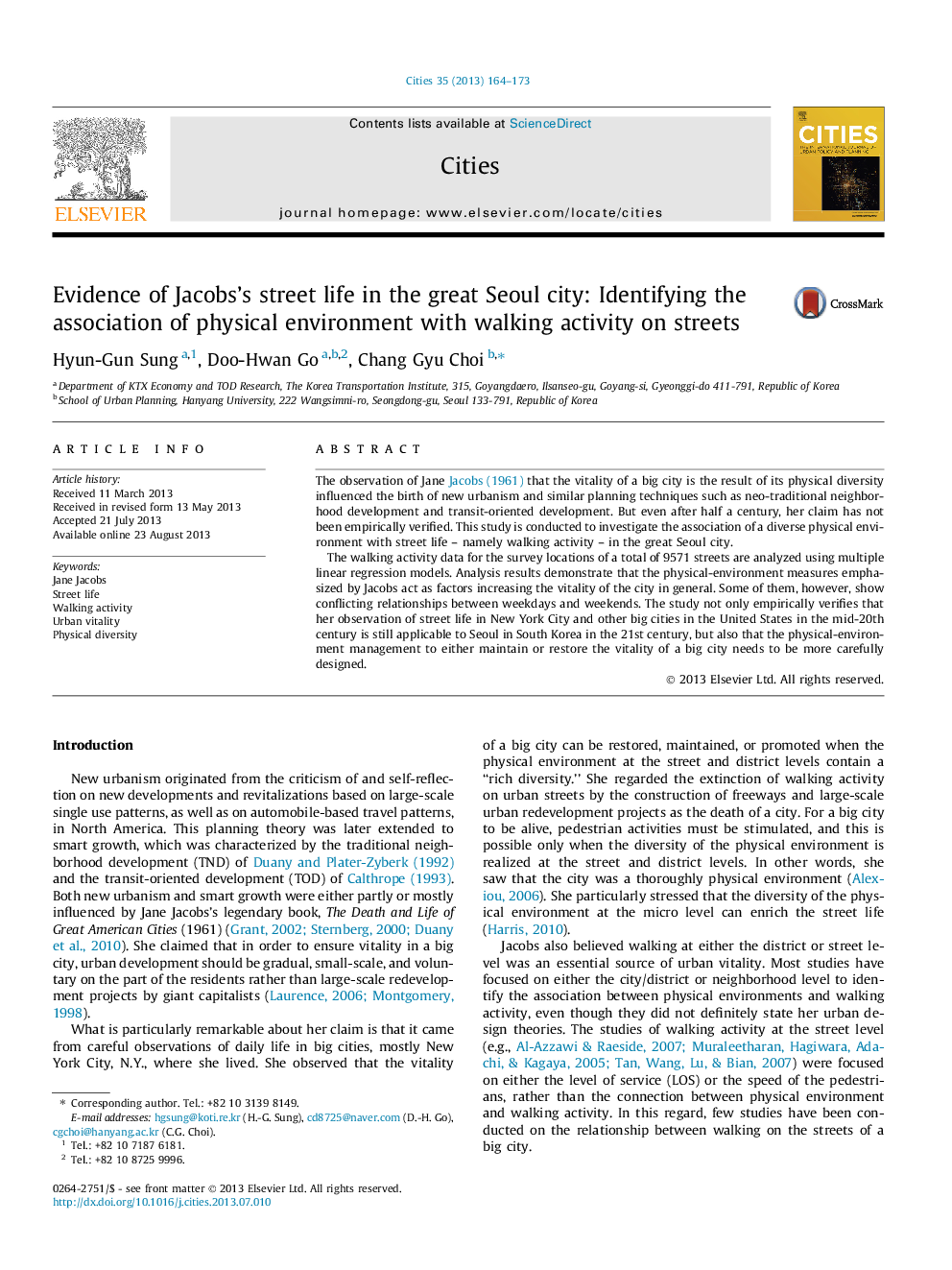| Article ID | Journal | Published Year | Pages | File Type |
|---|---|---|---|---|
| 1008448 | Cities | 2013 | 10 Pages |
•Jacobs’s theory in New York City of the mid-20th century was applied to the Seoul city of the early-21th century.•Physical diversity is important for street vitality.•Some of Jacobs’s physical diversity observations may conflict with urban vitality in Seoul.•Jacobs’s approach might be more powerfully improved, considering socio-economic and physical conditions in a big city.
The observation of Jane Jacobs (1961) that the vitality of a big city is the result of its physical diversity influenced the birth of new urbanism and similar planning techniques such as neo-traditional neighborhood development and transit-oriented development. But even after half a century, her claim has not been empirically verified. This study is conducted to investigate the association of a diverse physical environment with street life – namely walking activity – in the great Seoul city.The walking activity data for the survey locations of a total of 9571 streets are analyzed using multiple linear regression models. Analysis results demonstrate that the physical-environment measures emphasized by Jacobs act as factors increasing the vitality of the city in general. Some of them, however, show conflicting relationships between weekdays and weekends. The study not only empirically verifies that her observation of street life in New York City and other big cities in the United States in the mid-20th century is still applicable to Seoul in South Korea in the 21st century, but also that the physical-environment management to either maintain or restore the vitality of a big city needs to be more carefully designed.
